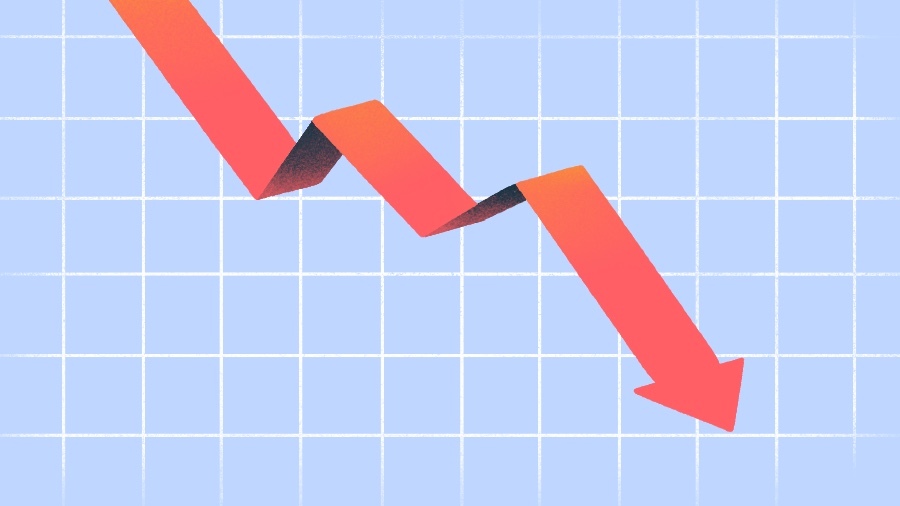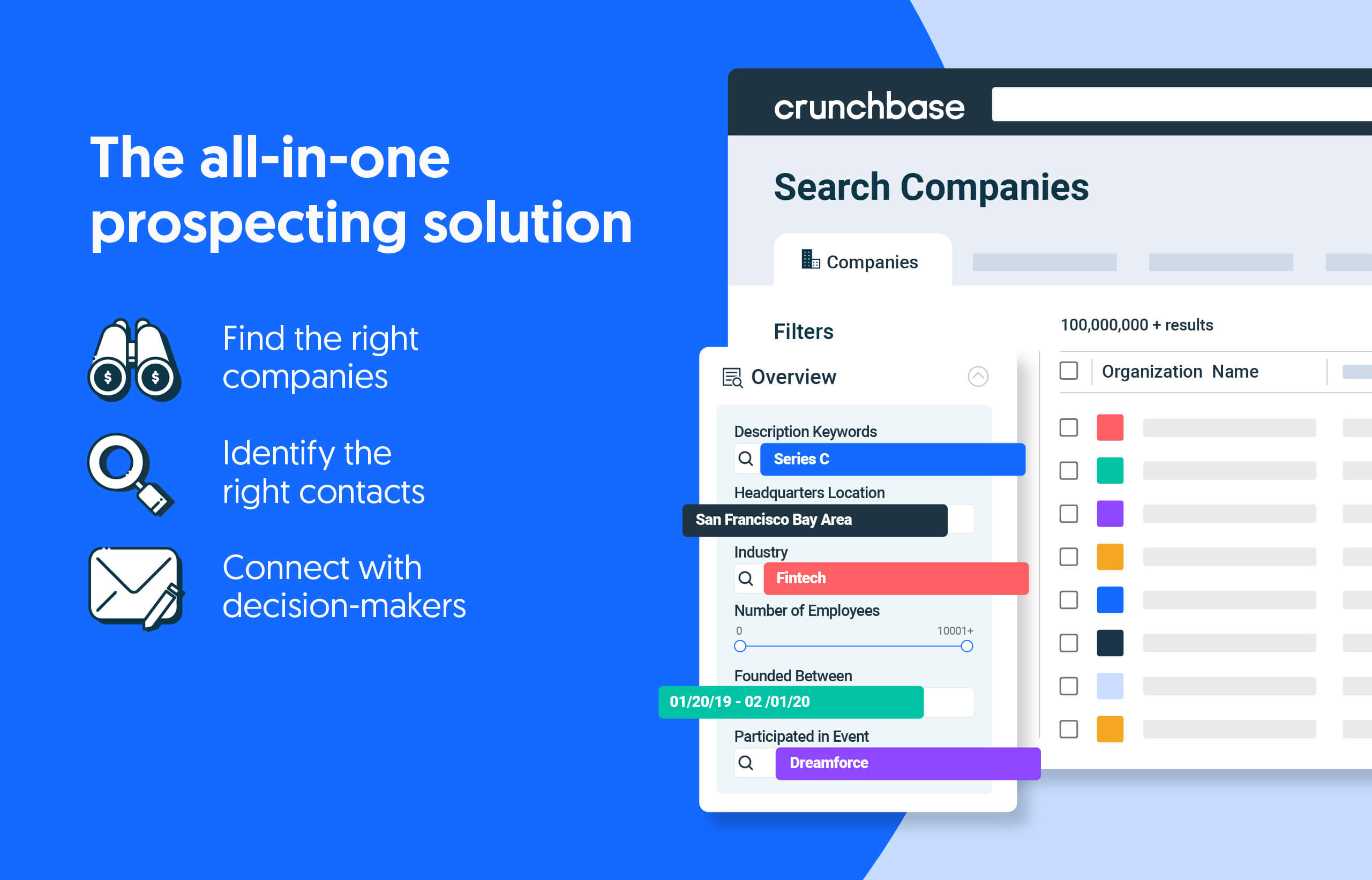After rising for more than a decade, the typical funding deal size for a U.S.-based startup is falling.
Average and median deal sizes have dipped since the latter half of 2022, Crunchbase data shows. That follows a systematic rise over the previous decade for U.S.-based startups.
Search less. Close more.
Grow your revenue with all-in-one prospecting solutions powered by the leader in private-company data.
Within that decade-long rise, there was a noticeable upward inflection in recent years. In 2021, round size from seed to Series B leapt up between 25% and 59% year over year — even more than in prior years. For Series C, the initial surge took place a year earlier in 2020, based on an analysis of Crunchbase data.
But starting in the second half of last year, average and median round sizes have flattened or shifted down. The downward shift is noticeable but gradual, with more mature companies from Series C onward hit the hardest for now. For the past quarter, seed through Series B fundings hovered above 2020 average and median size, while Series C fundings remained below.
We also see another interesting trend as the decade progresses: The gap between median and average funding by type has widened in recent years. This shows that sizable rounds at each stage have become more common, pushing averages up more dramatically. (We did place an upper limit for each funding type to limit the impact of outlier rounds on average fundings.)
Let’s dive in and look at each stage as they illustrate some matching and some divergent dynamics.
Seed
The size of the typical seed funding round peaked in 2022, Crunchbase data shows, but has since dipped.
If you go back about 10 years to 2014, the median and average seed funding for a U.S.-based startup was below $1 million.
Since 2014, the typical seed deal has increased in size and peaked in 2022 at a median of $2.5 million and an average of $3.7 million.1
In contrast to the overall venture funding pullback in 2022, seed funding was higher in the first half of 2022 compared to 2021 and showed a decline year over year starting in the fourth quarter.
Series A
The median and average Series A deal size also peaked in 2022 before dropping more recently, Crunchbase data shows.
The growth of the seed ecosystem impacted Series A fundings as it expanded the number of years a startup could build in advance of a Series A funding.
Median and average Series A fundings in 2014 were $5 million and $7.7 million, respectively, for U.S.-based startups.
The typical Series A deal size peaked in 2022 at $14 million (median) and $19.1 million (average). It has since come down to $12 million and $18.7 million, respectively — not a big drop, one could say. (But, keep in mind, we expect those amounts for the most recent quarter to trend down further as fundings continue to be added to the Crunchbase database after the end of the quarter. We find that deals added after the close of a quarter tend to be smaller.)
Series B
Series B fundings peaked sooner than seed and Series A — all the way back in 2021, Crunchbase data shows. This indicates a sharper pullback in funding in 2022 from Series B onward.
In 2014, Series B deals tracked at a median of $11.7 million and an average of $16.3 million.
That ramped up substantially over the following decade to peak in 2021 at a median of $32 million and an average of $46 million.
That’s dipped again somewhat to $28 million and $40 million, respectively, in 2023.
Series C
Similar to Series B funding, Series C peaked in 2021. But the jump in funding happened in 2020, a year earlier than prior funding stages.
Series C fundings show the greatest decline for all stages analyzed here. In 2014, the median Series C funding was $18 million and the average $26.4 million. That peaked in 2021 at $60 million and $82 million, respectively.
In Q1 2023, a median Series C round for a U.S.-based startup was $42 million and the average $59 million. The gap has also narrowed slightly, indicating fewer larger rounds at Series C.
Never going back again
While it is clear we are not going back to funding levels from a decade ago, the question is whether round sizes will shrink back to pre-pandemic levels.
For now, the only stage we analyze here that’s dropped below 2020 levels is Series C funding. But even Series C is still above the 2019 median and average round size.
What we can say is that the reset is only two to three quarters in and likely has not yet hit bottom. Each distinct funding stage is reacting to the cuts in the stage after it. If late-stage funding continues to contract due to the closure of the IPO markets, then startups at earlier stages face an uncertain future.
Related reading
- Getting To Series A Has Gotten Harder
- Series B Funding Has Also Fallen Sharply
- Series C Isn’t What It Used To Be
- Series D Hits Lowest Point In Years. What Does That Mean?
Methodology
For this analysis we only include U.S.-headquartered companies to remove the impact of distinct trends in different geographies.
For seed funding we exclude angel and pre-seed rounds. For each funding type we exclude outlier rounds. At seed we excluded fundings of $100 million and more. At Series A we exclude fundings at or above $200 million. For Series B we exclude fundings at or above $300 million and for Series C fundings at or above $500 million.
Illustration: Dom Guzman
For this chart we exclude seed rounds above $100 million. We exclude angel and pre-seed fundings. ↩

Stay up to date with recent funding rounds, acquisitions, and more with the Crunchbase Daily.




![Illustration of a guy watering plants with a blocked hose - Global [Dom Guzman]](https://news.crunchbase.com/wp-content/uploads/quarterly-global-3-300x168.jpg)
67.1K Followers